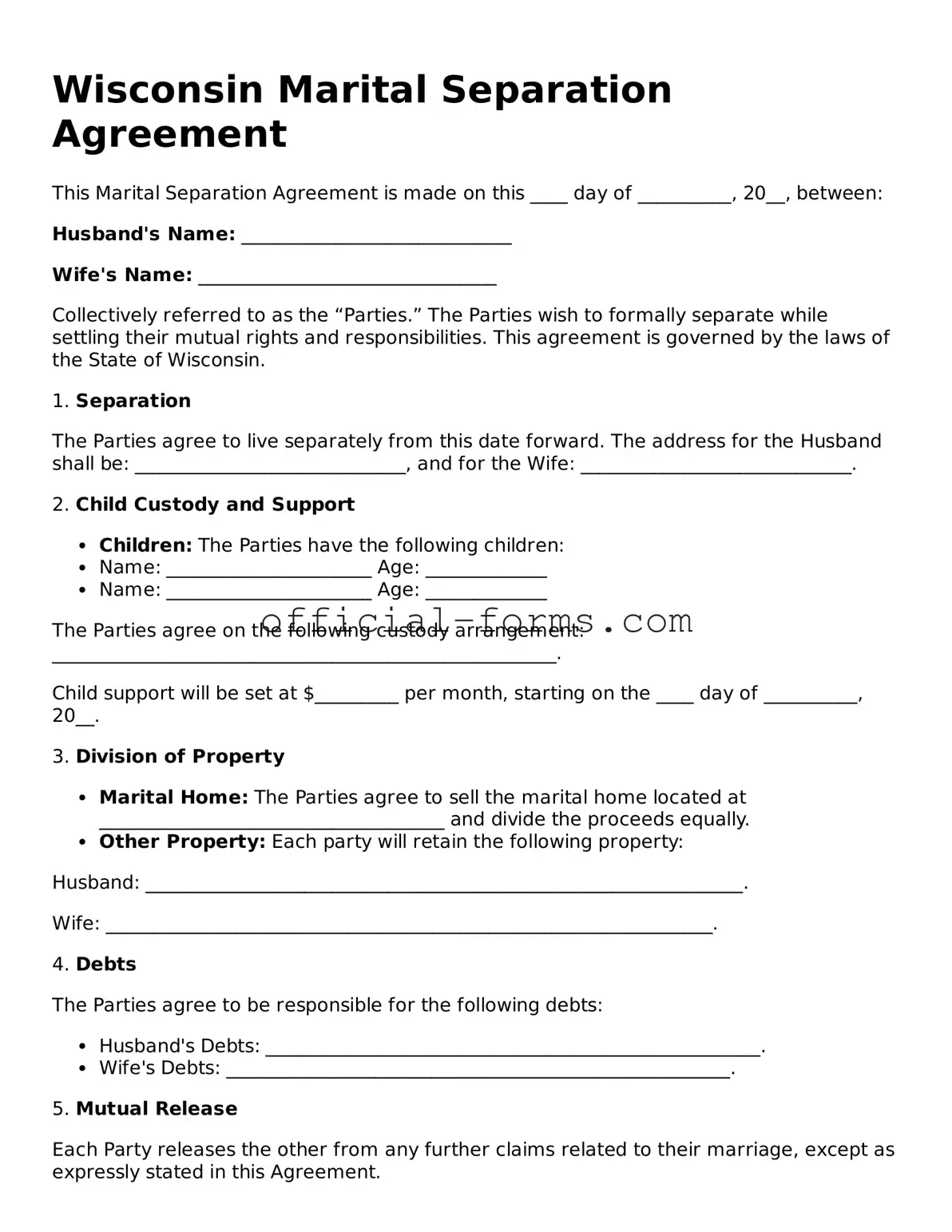Filling out a Wisconsin Marital Separation Agreement form can be a daunting task, and many individuals make common mistakes that can lead to complications down the road. One frequent error is not clearly defining the terms of the separation. This includes failing to specify how assets and debts will be divided. Without clear definitions, misunderstandings may arise, potentially leading to disputes later on.
Another mistake is neglecting to include all relevant financial information. When individuals omit income, expenses, or assets, they create an incomplete picture of their financial situation. This can result in unfair agreements that do not accurately reflect each party's contributions or needs.
People often forget to address child custody and support arrangements. If children are involved, it is crucial to outline parenting plans and financial responsibilities. Ignoring these aspects can lead to confusion and conflict, especially if circumstances change after the separation.
In some cases, individuals may not fully understand the implications of their agreement. They might sign the form without seeking legal advice, which can be a significant oversight. Consulting with a legal professional ensures that individuals understand their rights and obligations, helping to prevent future legal issues.
Another common error is failing to update the agreement after significant life changes. Life events such as job changes, relocations, or changes in children's needs can affect the terms of the agreement. Regularly reviewing and updating the document can help maintain its relevance and effectiveness.
People sometimes make the mistake of not considering tax implications. Certain financial decisions made during the separation can have tax consequences. For example, the division of retirement accounts or alimony payments can impact tax filings, so it’s wise to consult a tax professional.
Additionally, some individuals may overlook the importance of notarization. A Marital Separation Agreement should be signed in the presence of a notary public to ensure its validity. Without notarization, the agreement may face challenges in court if one party disputes its authenticity.
Another frequent oversight is not keeping a copy of the signed agreement. After the form is completed and signed, it is essential to retain a copy for personal records. This ensures that both parties have access to the same information and can refer back to the agreement when necessary.
Lastly, individuals sometimes rush through the process. Taking the time to carefully review each section of the form can prevent mistakes. A well-thought-out agreement can lead to a smoother transition into post-separation life, making it worthwhile to invest the necessary time and effort.
